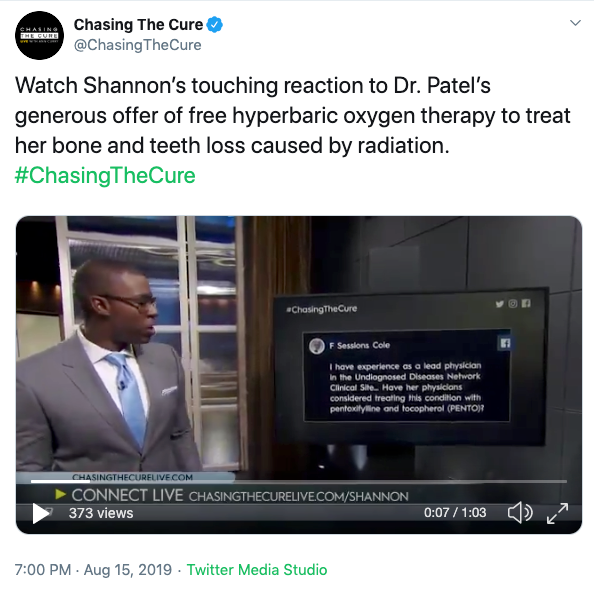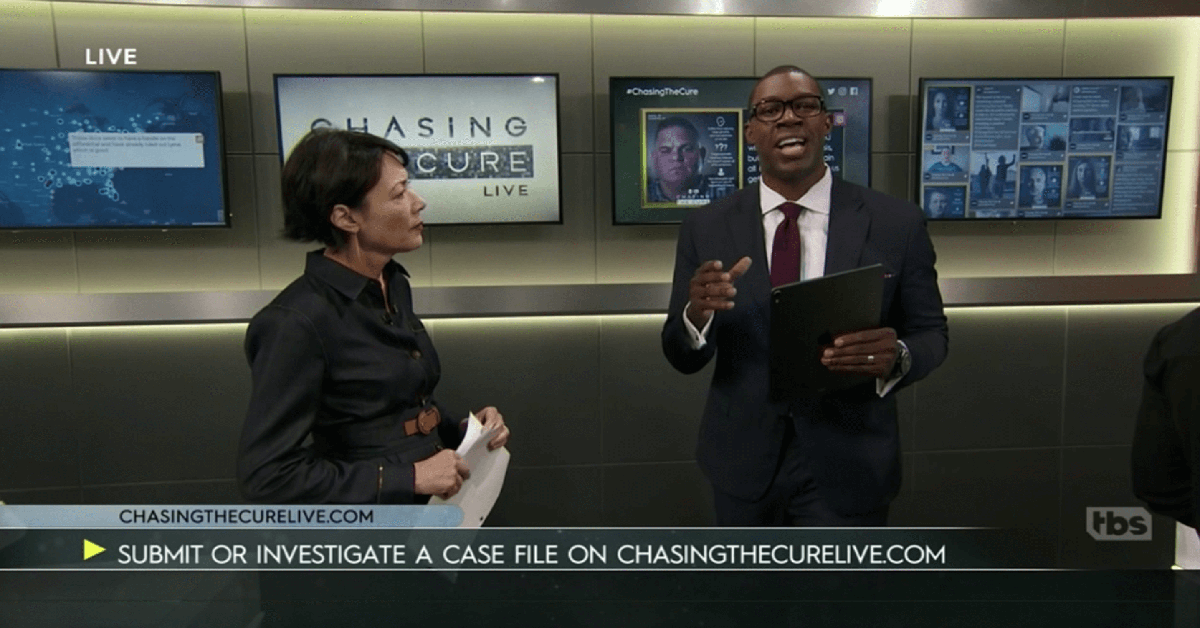With the first episode wrapped, Chasing the Cure host and Executive Producer Ann Curry took to Twitter. Curry tweets, “Let’s try to do good. That’s what we can all do, in ways big and small. “ The crowdsourcing medical show is trying to do good in a big way by helping solve medical cases of those who are undiagnosed or misdiagnosed. Think medical drama but with real people in desperate need of real help. Along with expert advice from a panel of doctors, the show leverages its audience on a chase for the cure. The crowdsourcing aspect of the show is groundbreaking for broadcast television and another area where Chasing the Cure is “doing good”.
Throughout the course of the 90 minute broadcast, the show highlights case files of 4 patients. Viewers are invited to call, text or take to social media to share their opinions. The thought here is that someone watching might have experienced similar symptoms and can suggest what worked for them. A bold and groundbreaking move that puts a lot of trust and confidence in the audience to show up to the conversation. Those suggestions are then highlighted on the broadcast in a mixture of ways, from full screen, to ticker, to in the background on a multimedia wall. A lot of shows call their audience into action, but few leverage that action, and rely on it, the way they do at Chasing The Cure. The interactive input is what drives a lot of the dialogue from the doctors that discuss why it could be the cure, or why it couldn’t. All while showcasing the original message from the viewer.
An area where the audience engagement really comes to life is in what they call the “Crowd Cure Center”. The cure center walls are lined with screens displaying social data and viewer comments, and the room is filled with people answering calls and text messages. The first episode crashed the website and flooded the phone lines with people looking to help. The result was an outpouring of support, including a video that brought one of the patients to tears. The Crowd Cure Center only further highlights the togetherness that can be found in sharing your experience on social media and then showcasing that with an even larger audience via television.
In the second episode, it was audience input that helped solve one of the cases. A sign that the groundbreaking show isn’t just a good idea, but a successful one. The crowdsourcing approach is creating a strong community around the show, and that community is doing their part to make a difference. That community isn’t only viewers speaking from experience, the show has garnered a strong support group in the medical industry as well. Doctors, or other medical care professionals, see the stories on air and want to help. So they reach out to the show with life changing offers.

The internet is not usually the best place to go when you’re searching for a cure. The results tend to yield a myriad of worst case scenarios and send you to your health care physician fearing the worst. Chasing The Cure is providing a home for those who can’t find a cure anywhere else. Their website hosts more than 3,000 case files that are filled with interactions between the patient and good people looking to help. It’s a hot bed of hope that has transitioned well to broadcast where Chasing the Cure continues to lean on its audience and experts as they do good and find the cure.
